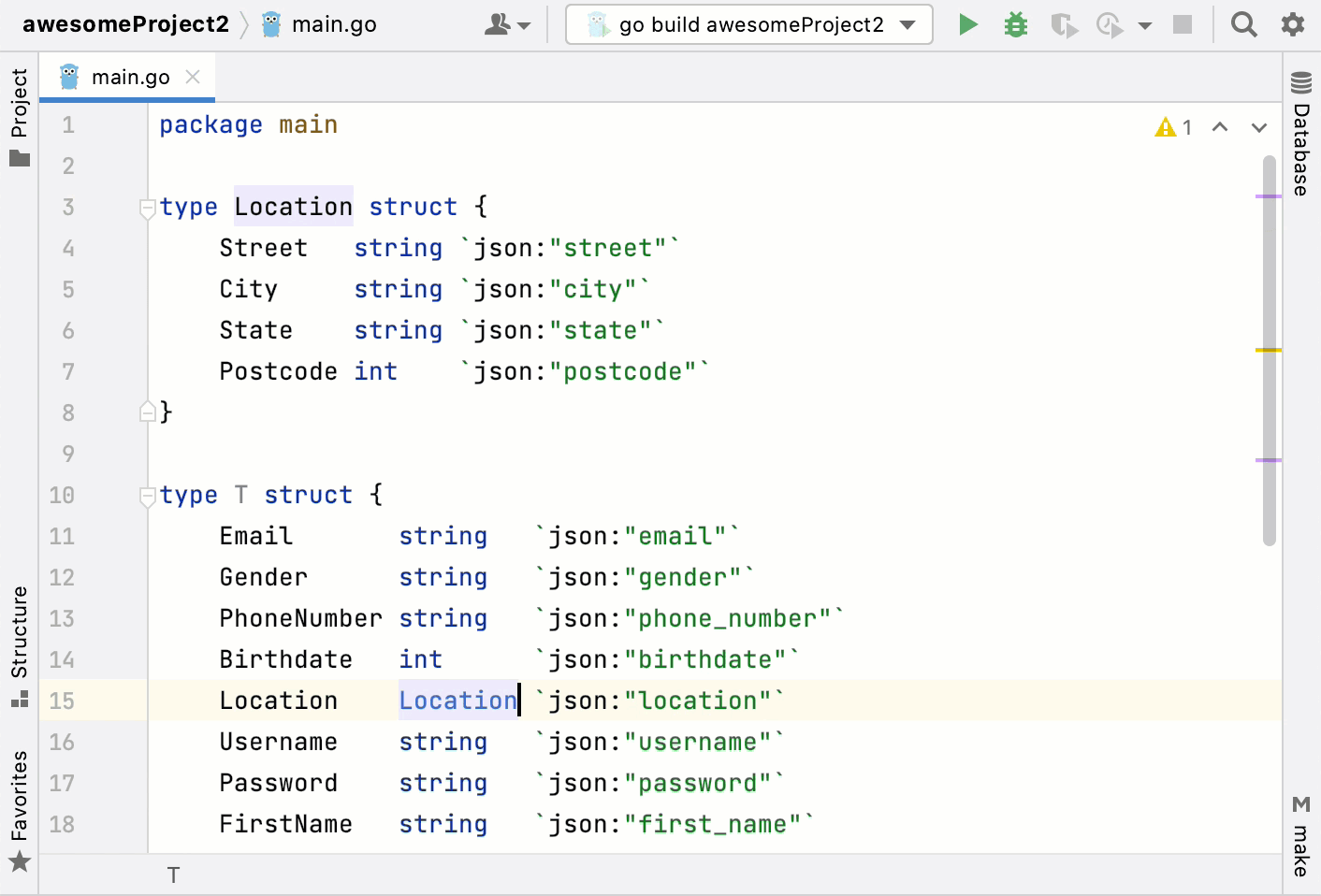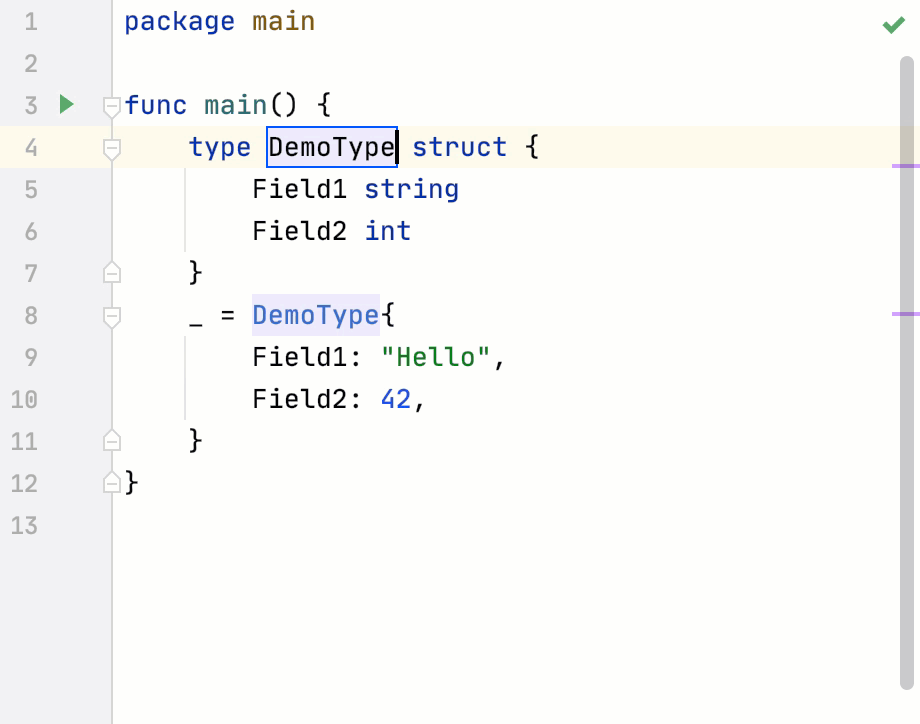Introduce type
The Introduce Type refactoring extracts a type that is inside of another type. Also, you can use this refactroing for converting the anonymous structure type to a named type.
For example, the extract operation might look like this. Consider the following JSON.
If you paste it to GoLand's editor and convert it to a struct type, you will get the T struct type with another Location struct type inside. The T struct is valid and you can continue working with it. But you might want to embed the Location type differently. See the following animation.

In the editor, click a type that you want to extract.
Click and select Introduce Type.
The animation shows how GoLand converts the anonymous structure type to a named type. You can try the Introduce Type refactoring with the following code snippet.
package main func main() { type DemoType struct { Field1 string Field2 int } _ = DemoType{ Field1: "Hello", Field2: 42, } }